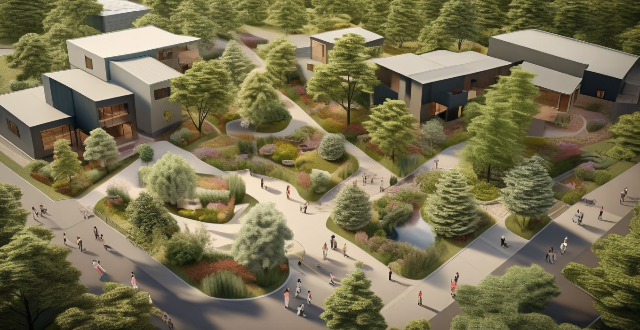Ecological design in architecture and urban planning aims to minimize environmental impacts, emphasizing sustainability, equity, cultural sensitivity, health, and long-term responsibility. Key practices include using renewable resources, ensuring accessibility for all, respecting local traditions, prioritizing health through non-toxic materials and natural environments, and planning for future adaptability and deconstruction. Addressing these ethical considerations is crucial for creating resilient, equitable communities that benefit both people and the planet.

Ethical Considerations in Ecological Design
Ecological design is an approach to architecture and urban planning that aims to minimize the negative impact of human activities on the environment. It involves creating buildings and landscapes that are sustainable, energy-efficient, and harmonious with their surroundings. While ecological design has many benefits, it also raises several ethical considerations that must be addressed to ensure its effectiveness and social responsibility.
1. Sustainability
Ecological design should prioritize sustainability as a core value. This means designing structures that use renewable resources, reduce waste, and minimize pollution. Sustainable practices can include:
- Using locally sourced materials to reduce transportation emissions
- Incorporating green roofs or walls to improve air quality and reduce heat island effects
- Installing solar panels or wind turbines for renewable energy generation
- Implementing water conservation measures like rainwater harvesting systems
2. Equity and Accessibility
Another important ethical consideration in ecological design is ensuring equity and accessibility for all members of society. This includes:
- Providing affordable housing options that incorporate eco-friendly features
- Designing public spaces that are accessible to people with disabilities
- Ensuring that green spaces are distributed equitably across neighborhoods
- Avoiding designs that create barriers or exclusionary environments based on income, race, or other factors
3. Cultural Sensitivity
Ecological design should also be culturally sensitive, respecting the traditions and values of local communities. This can involve:
- Incorporating traditional architectural styles into modern designs
- Collaborating with community members during the planning process to understand their needs and preferences
- Avoiding designs that could disrupt sacred sites or cultural landmarks
- Promoting diversity through the inclusion of different plant species and landscapes
4. Health and Well-being
The health and well-being of individuals and communities should be a key consideration in ecological design. This includes:
- Using non-toxic materials to reduce exposure to harmful chemicals
- Maximizing natural light and ventilation to improve indoor air quality
- Creating outdoor spaces that promote physical activity and mental relaxation
- Integrating nature into urban environments to enhance biodiversity and support ecosystem services
5. Long-term Responsibility
Finally, ecological design must consider long-term responsibility for the built environment's impact on future generations. This involves:
- Designing structures with durability and adaptability in mind to accommodate changing needs over time
- Planning for deconstruction or repurposing at the end of a building's life cycle
- Investing in research and development to continuously improve ecological design practices
- Educating future architects, planners, and policymakers about the importance of ecological design principles
In conclusion, ecological design offers numerous benefits for both people and the planet. However, it is essential to address these ethical considerations to ensure that ecological design truly serves the greater good by promoting sustainability, equity, cultural sensitivity, health, and long-term responsibility. By doing so, we can create more livable, resilient, and equitable communities for current and future generations.